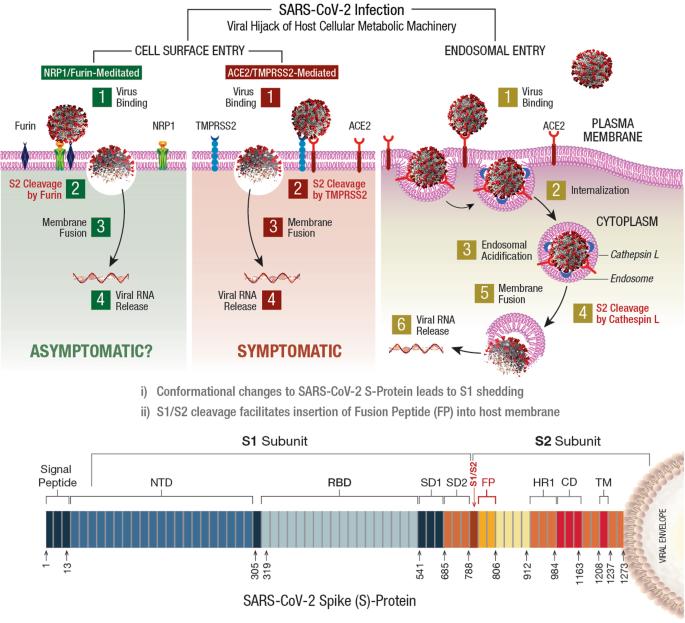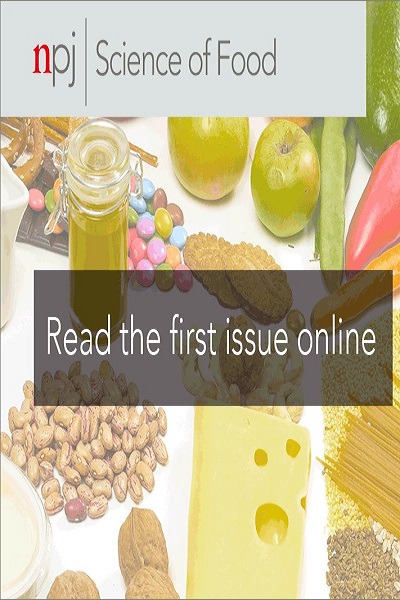Precision nutrition to reset virus-induced human metabolic reprogramming and dysregulation (HMRD) in long-COVID
IF 6.3
1区 农林科学
Q1 FOOD SCIENCE & TECHNOLOGY
引用次数: 0
Abstract
SARS‐CoV‐2, the etiological agent of COVID-19, is devoid of any metabolic capacity; therefore, it is critical for the viral pathogen to hijack host cellular metabolic machinery for its replication and propagation. This single-stranded RNA virus with a 29.9 kb genome encodes 14 open reading frames (ORFs) and initiates a plethora of virus–host protein–protein interactions in the human body. These extensive viral protein interactions with host-specific cellular targets could trigger severe human metabolic reprogramming/dysregulation (HMRD), a rewiring of sugar-, amino acid-, lipid-, and nucleotide-metabolism(s), as well as altered or impaired bioenergetics, immune dysfunction, and redox imbalance in the body. In the infectious process, the viral pathogen hijacks two major human receptors, angiotensin-converting enzyme (ACE)-2 and/or neuropilin (NRP)-1, for initial adhesion to cell surface; then utilizes two major host proteases, TMPRSS2 and/or furin, to gain cellular entry; and finally employs an endosomal enzyme, cathepsin L (CTSL) for fusogenic release of its viral genome. The virus-induced HMRD results in 5 possible infectious outcomes: asymptomatic, mild, moderate, severe to fatal episodes; while the symptomatic acute COVID-19 condition could manifest into 3 clinical phases: (i) hypoxia and hypoxemia (Warburg effect), (ii) hyperferritinemia (‘cytokine storm’), and (iii) thrombocytosis (coagulopathy). The mean incubation period for COVID-19 onset was estimated to be 5.1 days, and most cases develop symptoms after 14 days. The mean viral clearance times were 24, 30, and 39 days for acute, severe, and ICU-admitted COVID-19 patients, respectively. However, about 25–70% of virus-free COVID-19 survivors continue to sustain virus-induced HMRD and exhibit a wide range of symptoms that are persistent, exacerbated, or new ‘onset’ clinical incidents, collectively termed as post-acute sequelae of COVID-19 (PASC) or long COVID. PASC patients experience several debilitating clinical condition(s) with >200 different and overlapping symptoms that may last for weeks to months. Chronic PASC is a cumulative outcome of at least 10 different HMRD-related pathophysiological mechanisms involving both virus-derived virulence factors and a multitude of innate host responses. Based on HMRD and virus-free clinical impairments of different human organs/systems, PASC patients can be categorized into 4 different clusters or sub-phenotypes: sub-phenotype-1 (33.8%) with cardiac and renal manifestations; sub-phenotype-2 (32.8%) with respiratory, sleep and anxiety disorders; sub-phenotype-3 (23.4%) with skeleto-muscular and nervous disorders; and sub-phenotype-4 (10.1%) with digestive and pulmonary dysfunctions. This narrative review elucidates the effects of viral hijack on host cellular machinery during SARS-CoV-2 infection, ensuing detrimental effect(s) of virus-induced HMRD on human metabolism, consequential symptomatic clinical implications, and damage to multiple organ systems; as well as chronic pathophysiological sequelae in virus-free PASC patients. We have also provided a few evidence-based, human randomized controlled trial (RCT)-tested, precision nutrients to reset HMRD for health recovery of PASC patients.

精准营养,重置长期慢性乙型肝炎病毒诱导的人体代谢重编程和失调(HMRD)。
COVID-19 的病原体 SARS-CoV-2 不具备任何新陈代谢能力;因此,病毒病原体必须劫持宿主细胞的新陈代谢机制来进行复制和繁殖。这种单链 RNA 病毒拥有 29.9 kb 的基因组,编码 14 个开放阅读框(ORF),并在人体内启动了大量的病毒-宿主蛋白-蛋白相互作用。这些广泛的病毒蛋白与宿主特异性细胞靶点相互作用,可能引发严重的人体代谢重编程/失调(HMRD),糖、氨基酸、脂质和核苷酸代谢重构,以及体内生物能改变或受损、免疫功能障碍和氧化还原失衡。在感染过程中,病毒病原体会劫持两种主要的人体受体--血管紧张素转换酶(ACE)-2 和/或神经纤蛋白(NRP)-1,以初步粘附到细胞表面;然后利用两种主要的宿主蛋白酶--TMPRSS2 和/或呋喃蛋白--进入细胞;最后利用一种内体酶--凝血酶 L (CTSL),以裂变方式释放病毒基因组。病毒诱导的 HMRD 可导致 5 种可能的感染结果:无症状、轻度、中度、重度到致命性发作;而无症状的急性 COVID-19 病症可表现为 3 个临床阶段:(i) 缺氧和低氧血症(沃伯格效应),(ii) 高铁蛋白血症("细胞因子风暴"),(iii) 血小板增多(凝血病)。COVID-19 发病的平均潜伏期估计为 5.1 天,大多数病例在 14 天后出现症状。急性、重症和入住重症监护室的 COVID-19 患者的平均病毒清除时间分别为 24 天、30 天和 39 天。然而,约有 25-70% 的无病毒 COVID-19 幸存者会继续承受病毒引起的 HMRD,并表现出持续、加重或新 "发病 "临床事件等各种症状,统称为 COVID-19 急性后遗症(PASC)或长期 COVID。PASC 患者会出现多种使人衰弱的临床症状,这些症状多于 200 种,且相互重叠,可持续数周至数月。慢性 PASC 是至少 10 种不同的 HMRD 相关病理生理机制的累积结果,涉及病毒衍生的毒力因子和多种先天宿主反应。根据不同人体器官/系统的 HMRD 和无病毒临床损害,PASC 患者可分为 4 个不同的群组或亚型:亚型-1(33.8%)有心脏和肾脏表现;亚型-2(32.8%)有呼吸、睡眠和焦虑障碍;亚型-3(23.4%)有骨骼肌肉和神经障碍;亚型-4(10.1%)有消化和肺功能障碍。本综述阐明了 SARS-CoV-2 感染期间病毒劫持宿主细胞机制的影响、病毒诱发的 HMRD 对人体新陈代谢的不利影响、由此产生的临床症状、对多个器官系统的损害,以及无病毒 PASC 患者的慢性病理生理后遗症。我们还提供了一些经过人体随机对照试验(RCT)验证的循证精准营养素,以重置 HMRD,促进 PASC 患者的健康恢复。
本文章由计算机程序翻译,如有差异,请以英文原文为准。
求助全文
约1分钟内获得全文
求助全文
来源期刊

NPJ Science of Food
FOOD SCIENCE & TECHNOLOGY-
CiteScore
7.50
自引率
1.60%
发文量
53
期刊介绍:
npj Science of Food is an online-only and open access journal publishes high-quality, high-impact papers related to food safety, security, integrated production, processing and packaging, the changes and interactions of food components, and the influence on health and wellness properties of food. The journal will support fundamental studies that advance the science of food beyond the classic focus on processing, thereby addressing basic inquiries around food from the public and industry. It will also support research that might result in innovation of technologies and products that are public-friendly while promoting the United Nations sustainable development goals.
 求助内容:
求助内容: 应助结果提醒方式:
应助结果提醒方式:


